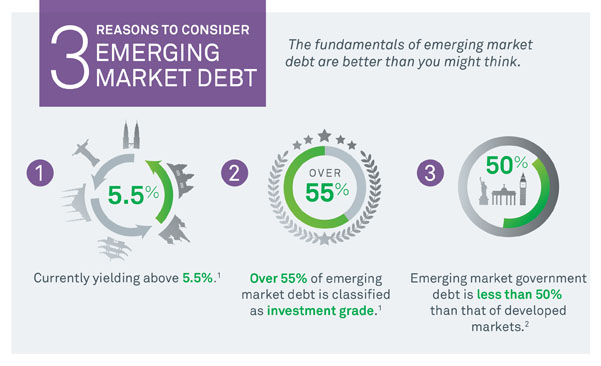
Stocks can be a great way to make a profit. However, this investment comes with inherent risks. Investors should take the time to establish a strong foundation before investing all their capital.
A critical step in buying stocks is selecting the right investment vehicle. It all depends on your goals and risk tolerance. You might choose to invest either in stock mutual funds, index funds or individual stocks. Each comes with its own advantages and disadvantages, so it's important to evaluate your options before making a final decision.
Depending on your level of experience, you can choose between a full-service brokerage or an online broker. An online broker provides all the necessary information to help you invest in stocks. A full-service broker is able to provide you with all the investment services you require to get started.

Online brokers can offer you a wide variety of options for investing in stocks, including the ability to buy and sell individual shares. Some brokers will also provide paper trading, which allows you to use a stock market simulator before investing real money.
Online brokers can give you instant access to market data and stock prices. You can also use their tools to track and monitor your investments. They can even help you set up automatic transfers to your account, allowing you to make regular contributions to your portfolio.
Setting up a brokerage account is the first step to buying stocks online. This step can be completed in just fifteen minutes. It is necessary to enter some basic personal information to get started. But once you have your account set up, access to the markets will be instant.
Next, determine the number of shares you are willing and able to invest. A novice investor might choose to start small with one share. An experienced investor might want to build a portfolio of many shares. The amount of money you can afford to invest in the stock market will depend on your budget and risk tolerance.

Once you have determined the number of shares you will invest in, it is time to set a limit. You'll want to decide how much money you'll spend on each share and set a stop price, which is the price you'll pay for each share if the price goes down. You should also choose a broker who requires you to invest a minimum amount. You may also be able to purchase fractional shares from brokers, which allows you to buy high-end stocks at a fraction of their cost.
Buying stocks online can be a great way to learn about investments and how to select the right stocks. While stock trading is often associated with multimillion dollar conglomerates, it's possible for even a beginner to make money in this industry.
If you're just beginning to invest in stocks, you should only put money you can lose. A cash cushion is also a good idea in case of emergency.
FAQ
How do I invest my money in the stock markets?
You can buy or sell securities through brokers. Brokers can buy or sell securities on your behalf. Brokerage commissions are charged when you trade securities.
Brokers usually charge higher fees than banks. Banks offer better rates than brokers because they don’t make any money from selling securities.
An account must be opened with a broker or bank if you plan to invest in stock.
If you are using a broker to help you buy and sell securities, he will give you an estimate of how much it would cost. Based on the amount of each transaction, he will calculate this fee.
Ask your broker about:
-
Minimum amount required to open a trading account
-
How much additional charges will apply if you close your account before the expiration date
-
What happens if your loss exceeds $5,000 in one day?
-
How long can positions be held without tax?
-
How you can borrow against a portfolio
-
whether you can transfer funds between accounts
-
What time it takes to settle transactions
-
the best way to buy or sell securities
-
How to Avoid Fraud
-
How to get assistance if you are in need
-
If you are able to stop trading at any moment
-
Whether you are required to report trades the government
-
whether you need to file reports with the SEC
-
What records are required for transactions
-
How do you register with the SEC?
-
What is registration?
-
How does it affect you?
-
Who must be registered
-
When do I need registration?
What Is a Stock Exchange?
Companies can sell shares on a stock exchange. This allows investors and others to buy shares in the company. The market decides the share price. It is often determined by how much people are willing pay for the company.
Stock exchanges also help companies raise money from investors. Investors are willing to invest capital in order for companies to grow. This is done by purchasing shares in the company. Companies use their money for expansion and funding of their projects.
A stock exchange can have many different types of shares. Some of these shares are called ordinary shares. These are most common types of shares. Ordinary shares are traded in the open stock market. Stocks can be traded at prices that are determined according to supply and demand.
Preferred shares and debt securities are other types of shares. Priority is given to preferred shares over other shares when dividends have been paid. Debt securities are bonds issued by the company which must be repaid.
How Do People Lose Money in the Stock Market?
The stock market is not a place where you make money by buying low and selling high. It's a place where you lose money by buying high and selling low.
The stock exchange is a great place to invest if you are open to taking on risks. They want to buy stocks at prices they think are too low and sell them when they think they are too high.
They hope to gain from the ups and downs of the market. They might lose everything if they don’t pay attention.
Statistics
- Even if you find talent for trading stocks, allocating more than 10% of your portfolio to an individual stock can expose your savings to too much volatility. (nerdwallet.com)
- Our focus on Main Street investors reflects the fact that American households own $38 trillion worth of equities, more than 59 percent of the U.S. equity market either directly or indirectly through mutual funds, retirement accounts, and other investments. (sec.gov)
- US resident who opens a new IBKR Pro individual or joint account receives a 0.25% rate reduction on margin loans. (nerdwallet.com)
- For instance, an individual or entity that owns 100,000 shares of a company with one million outstanding shares would have a 10% ownership stake. (investopedia.com)
External Links
How To
How to Trade in Stock Market
Stock trading is a process of buying and selling stocks, bonds, commodities, currencies, derivatives, etc. The word "trading" comes from the French term traiteur (someone who buys and sells). Traders sell and buy securities to make profit. It is one of the oldest forms of financial investment.
There are many ways to invest in the stock market. There are three basic types of investing: passive, active, and hybrid. Passive investors simply watch their investments grow. Actively traded traders try to find winning companies and earn money. Hybrid investors combine both of these approaches.
Index funds track broad indices, such as S&P 500 or Dow Jones Industrial Average. Passive investment is achieved through index funds. This strategy is extremely popular since it allows you to reap all the benefits of diversification while not having to take on the risk. You can just relax and let your investments do the work.
Active investing involves picking specific companies and analyzing their performance. Active investors will analyze things like earnings growth rates, return on equity and debt ratios. They also consider cash flow, book, dividend payouts, management teams, share price history, as well as the potential for future growth. Then they decide whether to purchase shares in the company or not. If they feel that the company's value is low, they will buy shares hoping that it goes up. However, if they feel that the company is too valuable, they will wait for it to drop before they buy stock.
Hybrid investment combines elements of active and passive investing. You might choose a fund that tracks multiple stocks but also wish to pick several companies. This would mean that you would split your portfolio between a passively managed and active fund.